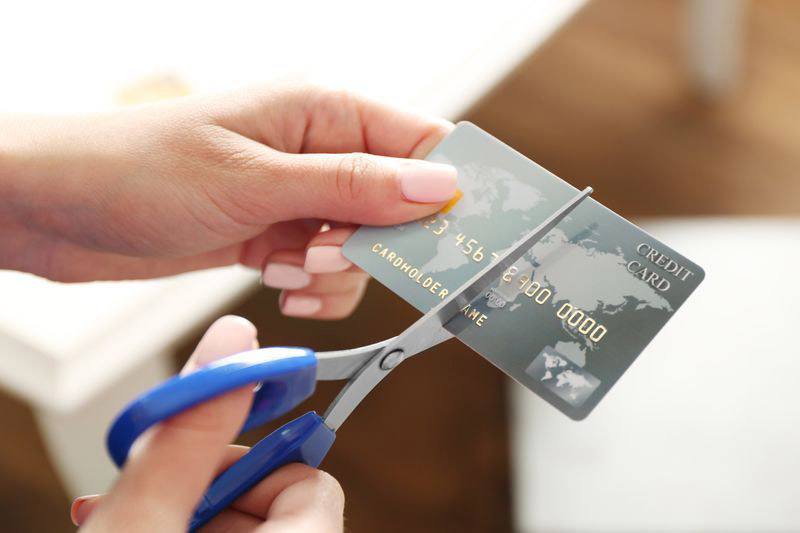A high credit score can help you find the best deals on credit cards, apartments, phone plans, cars, and more.
And when calculating your credit score, scoring models look at your credit utilization ratio.
“What’s a credit utilization ratio?”
Credit utilization ratio is a percentage of your total credit used from the total available credit.
And if you want to know more about credit utilization to further improve your credit scores, then this will probably be the most important article you’ll come across today.
And here’s why:
With my 25 years of experience as a financial coach and banking expert, I’ll teach you not only what credit utilization is but also how to calculate it yourself.
Better stick around ‘til the end because I’ll also give you powerful tips on maintaining a good credit utilization ratio.
So, is credit utilization really that important? Let’s find out!

Credit Utilization Ratio: The Basics
Credit utilization measures how much of your total available credit you’re using.
This applies to all revolving credit accounts like credit cards and personal lines of credit.
However, this does not include installment credit. Installment loans, like mortgages, car loans, or student loans, are closed-ended accounts that you or borrowers pay back over an agreed-upon time. This will not affect your credit utilization ratio.
The credit utilization ratio is the percentage of the amount of credit you’re currently using compared to your total credit limit.
And according to the two most used credit scoring models, FICO and VantageScore, credit utilization is a big factor when determining your credit scores.
Here’s how FICO calculates credit scores:
- Payment History (35%)
- Amounts Owed / Credit Utilization (30%)
- Length of Credit History (15%)
- New Credit (10%
- Credit Mix (10%)
On the other hand, here’s how VantageScore determines credit scores:
- Payment History – Extremely influential
- Credit Utilization – Highly influential
- Credit age and Mix – Highly influential
- Amount Owed – Moderately influential
- Recent Credit Behavior – Less influential
- Available Credit – Less influential
Amounts owed or credit utilization is the second most important factor determining credit scores for both scoring models.
The utilization ratio takes up about 30% of your credit score, while it is considered highly influential for VantageScore credit scores.
What’s A Good Credit Utilization Rate? Follow the 30% Rule!
Lenders can tell through your credit scores how well you manage your credit utilization.
And if you’re maxing out your credit card, lenders will have second thoughts on approving your application.
It’s best to keep your credit utilization ratio no more than 30% of your total available revolving credit.
Carrying more than 30% can make potential lenders or credit issuers think you’ll have trouble repaying what you’ll borrow.
In fact, people with excellent credit scores often have a credit utilization number in single digits.
How To Calculate Your Credit Card Utilization
Here are the steps on how to calculate your credit utilization ratio:
- Add all your revolving credit balances
- Add up the credit limits of all your revolving accounts
- Divide your total revolving credit balance (the total sum in Step 1) by your total credit limit (the total sum from Step 2).
- Multiply the number (from Step 3) by 100 to see your credit utilization ratio.
For instance, say you have two credit cards: Card A has a balance of $2,000, while Card B has a balance of $4,000.
Then, let’s say both of your credit cards have a $5,000 limit, making your total revolving credit limit $10,000.
By using the method above, we must add all revolving credit balances. In this case, adding the $2,000 balance in Card A and the $4,000 balance in Card B makes a total of $6,000.
Since your credit limit for both cards is $10,000, dividing $6,000 by $10,000 is 0.6.
Finally, we multiply 0.6 by 100, which makes your credit utilization ratio 60%.
And as we’ve tackled earlier, a credit utilization ratio above 30% is inadvisable.
Keep scrolling, as I’ll show you tips for maintaining a good credit utilization ratio.

How Credit Utilization Ratio Affects Credit Scores
Potential lenders and credit issuers are interested in your credit scores and your credit utilization because it shows how well you responsibly manage your finances.
It shows lenders how likely you will be able to repay any additional borrowed money.
If you maxed out a credit card, meaning the amount you owe has reached its limit, lenders may see this as spending more than you can afford.
On the other hand, having a low credit utilization ratio makes you more attractive to lenders and credit issuers.
Having a credit utilization below 30% shows lenders that you are capable and responsible enough to repay your debts.
A low credit utilization ratio, on the other hand, shows lenders that you can repay what you owe. It may also suggest that you could take on additional debt and keep up with your payments.
Remember that credit utilization accounts for about 30% of your FICO score. However, other factors, like payment history and length of credit history, can also impact your scores.
How To Maintain A Good or Low Credit Utilization Ratio
There are a few ways to improve your credit utilization ratio, which generally helps increase credit scores.
Follow these steps below if you want to maintain a good credit utilization ratio:
Reducing Revolving Credit Balances
First, let’s reduce balances on your revolving credits.
Paying down debts you owe is one of the easiest ways to control your credit utilization ratio.
Plan a monthly budget that works for you and allows you to save enough to repay debts.
Extra Tip: Ask your lender when they report your activity to the credit bureaus (Equifax, TransUnion, and Experian) and ensure you always pay your bills before that date.
Increasing your credit limit
Another way to lower your credit utilization ratio is by increasing your credit limit.
There are two ways you can do this.
The first one, you can get an added credit limit by opening a new credit card.
The second one is asking your lender for a credit limit increase on one of your accounts.
Keep in mind that your credit card limits are based on your financial health, such as your credit scores and income.
So, if you recently received a promotion or your credit score has recently increased, you may be eligible for a credit limit increase.
Set Alerts On Your Credit Cards
Nowadays, there are now credit cards that offer alerts that you can set for various kinds of things.
For instance, you can set an alert to notify you when you’re close to hitting 30% of your credit utilization so you can stop spending.
Reconsider Closing Old Accounts
Sometimes, you might think that closing a credit card that you’re not using anymore or a credit card with a zero balance is good for your credit, but in reality, it can actually hurt your credit scores.
Closing credit cards can decrease your available credit, resulting in a higher credit utilization ratio.
But every situation is unique and different.
Just consider your circumstances. Maybe make a pros and cons list and reconsider closing old accounts to maintain a good credit utilization ratio.

Credit Utilization Ratio: Final Thoughts
Credit utilization ratio is one of the biggest factors in calculating credit scores.
It’s the percentage of your total balance from all revolving credit from your total available credit.
Reducing your credit utilization ratio below 30% is one of the best ways to improve your credit scores.
You can do this by reducing your revolving credit balance, increasing your credit limit, or setting alerts on your credit cards.
Lenders like it when borrowers only use small amounts of credit.
A low credit utilization ratio also shows lenders that you’re responsible for managing your finances by not maxing out credit cards.
